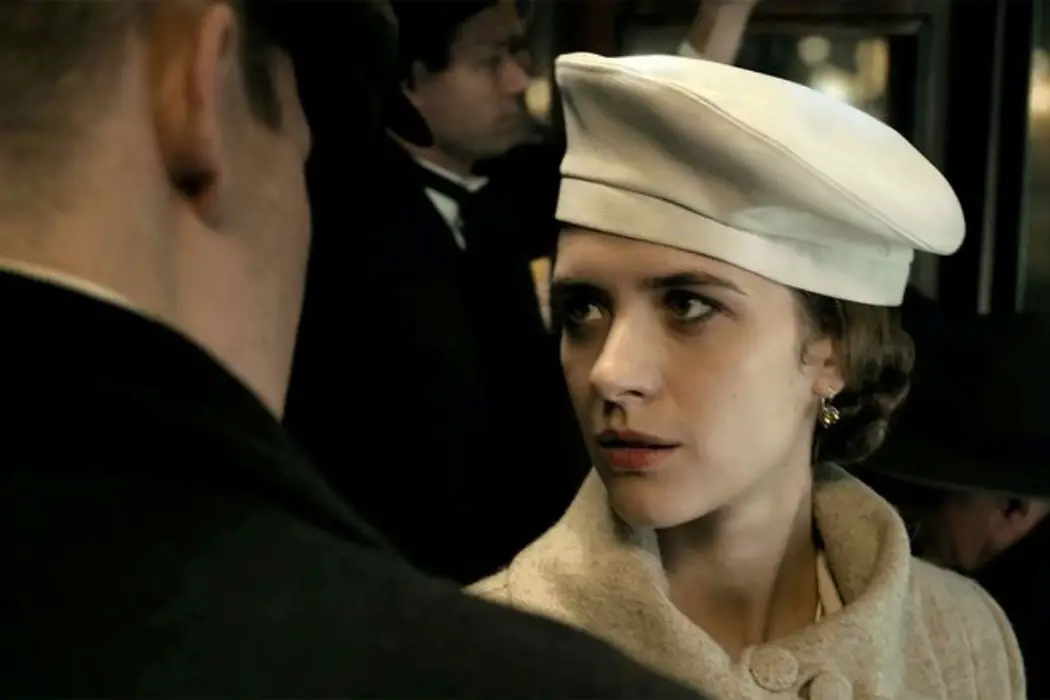HINTERLAND: Here Be Monsters

Lee Jutton has directed short films starring a killer toaster,…
Set just after the conclusion of World War I and drawing considerable stylistic inspiration from one of the most iconic horror films released during that period, Hinterland is a moody serial killer thriller from Academy Award-winning filmmaker Stefan Ruzowitzky (The Counterfeiters). Here, post-war Vienna is rendered dark, distorted, and dangerous, a heaving mess of mind-bending angles and crooked architecture from which a person could lose their sanity trying to find an escape. But once you manage to look past the film’s extravagant visuals, it’s hard to not be left wanting something more.
Under the Shadow
The film opens in 1920 as a boat of former soldiers arrives in Vienna from the prisoner of war camp where they have spent the past few years barely scraping by. The Austro-Hungarian Empire has collapsed and been replaced with a republic; soldiers are welcomed back not as heroes, but as failures who abandoned their families at home to fight for a lost cause abroad.

One such soldier is Peter Perg (Murathan Muslu), a former police detective who returns to Vienna to discover that his wife and daughter have moved out of their family home. Perg initially hesitates to track them down, not quite ready to reunite face-to-face after such a long departure. Instead, he finds himself tangled up in a murder mystery involving his fellow POWs, who are being tortured and killed one by one.
Teaming up with Theresa Körner (Liv Lisa Fries), a forensic doctor and old acquaintance, and Paul Severin (Max von der Groeben), a new cop who harbors suspicions about Perg’s role in the whole thing, Perg must solve the mystery before potentially becoming the next victim — all the while struggling to survive in a post-war world radically different from the one he left behind.
Doom and Gloom
Ruzowitzky has described Hinterland as a “digital Dr. Caligari’s Cabinet,” and indeed, the film’s dark and twisted visual style — an apt reflection of the madness and mayhem plaguing Vienna — is a clear homage to the ultimate German Expressionist film, Robert Wiene’s The Cabinet of Dr. Caligari (1920). But whereas visuals in that earlier film were all practical — in fact, some of the wild perspective and distortion effects were achieved by painting streaks of light directly onto the sets — Hinterland relies on modern VFX, making the film actually look much more reminiscent of Kerry Conran’s stunning Sky Captain and the World of Tomorrow (2004) than Wiene’s masterpiece. The result is an atmospheric rendition of Vienna in 1920, created with blue screen technology, that turns the city itself into almost as formidable a foe as the serial killer haunting its streets.

Unfortunately, I found the serial killer plot too conventional and predictable in spite of the creative ways in which each of the victims is dispatched (including one whose legs are eaten by starving rats!) The hunt for the killer is surprisingly lacking in tension, in large part because we don’t know enough about these people — victims and killer alike — to really care about what happens to them in the end. (It doesn’t help that the actors, as essentially the only non-computer-generated things on screen, are overshadowed by the visual splendor around them; this is something that Sky Captain managed to avoid by casting some of the biggest stars around and actually having an interesting story.)
Much better are the scenes in which Perg takes in a new-look Vienna — complete with jazz bands, fluid sexuality, and women with jobs traditionally held by men — and tries to figure out where he fits into it all. The country that he signed up to fight for with patriotic fervor no longer exists; what should he fight for now? This post-war existential crisis, especially considering what came so soon afterward in Austria, is far more worthy of cinematic exploration than murder and revenge.
Conclusion
Hinterland’s high concept is let down by a weak script that doesn’t make the most of the film’s intriguing setting and talented cast.
What do you think? Are you a fan of such extensive use of blue screen technology? Share your thoughts in the comments below.
Hinterland is now available on VOD and digital.
Watch Hinterland
Does content like this matter to you?
Become a Member and support film journalism. Unlock access to all of Film Inquiry`s great articles. Join a community of like-minded readers who are passionate about cinema - get access to our private members Network, give back to independent filmmakers, and more.
Lee Jutton has directed short films starring a killer toaster, a killer Christmas tree, and a not-killer leopard. Her writing has appeared in publications such as Film School Rejects, Bitch: A Feminist Response to Pop Culture, Bitch Flicks, TV Fanatic, and Just Press Play. When not watching, making, or writing about films, she can usually be found on Twitter obsessing over soccer, BTS, and her cat.













